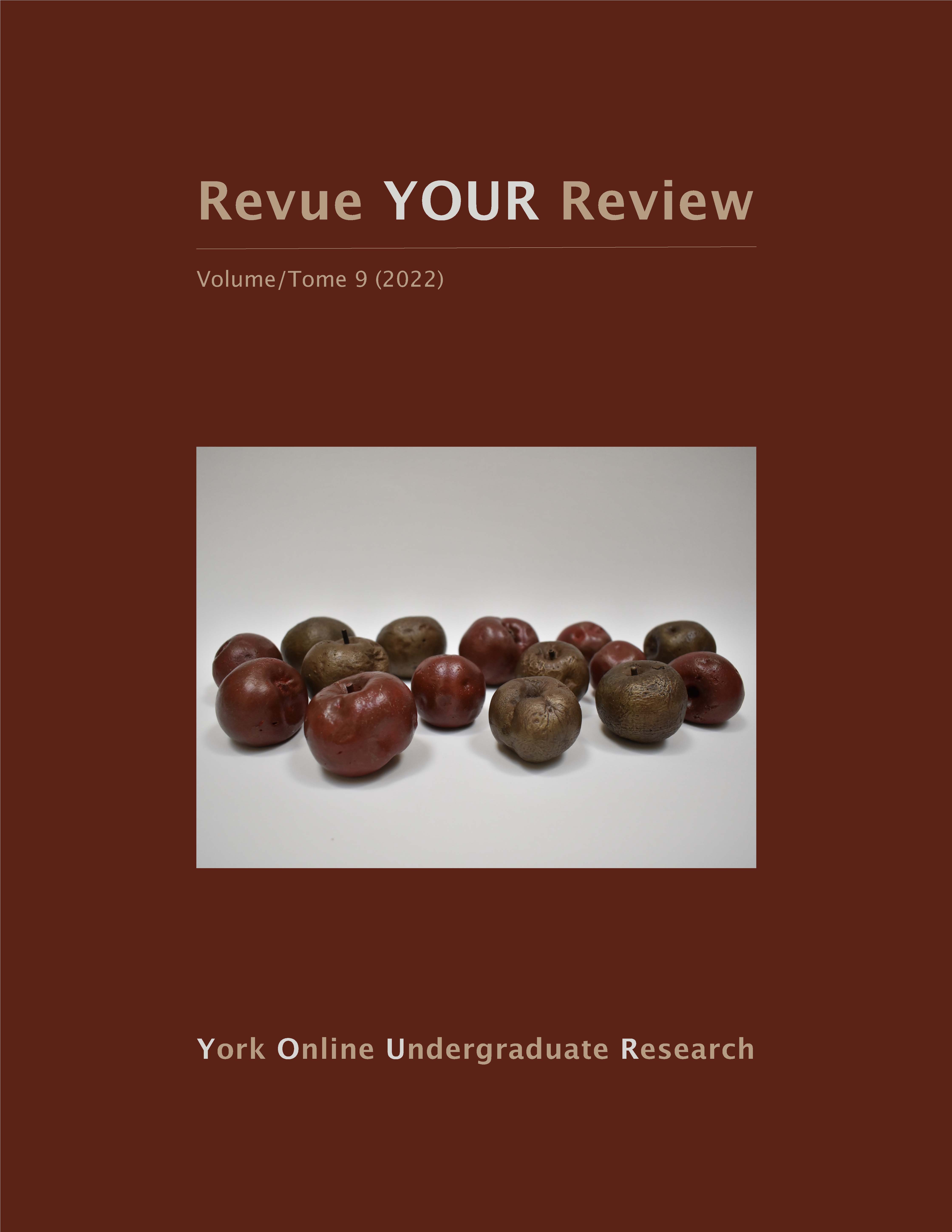Food Deserts in Toronto
Abstract
My article discusses the prevalence of food deserts in Toronto. A food desert can be defined as a geographical area where there is limited access to affordable and healthy food options. These are most common in low-income communities. The purpose of my article is to discuss food deserts in the city of Toronto and why they occur, in relation to the bigger issue of food insecurity. I apply themes of urban environmental justice to explain that there is a link between urban food deserts and low-income people of colour, which puts them at an increased risk for unhealthy diet choices. I used the York University library to access journal articles and other resources that gave me the insight to define food deserts, identify the location of convenience stores in Toronto, and relate this connection to low-income communities. I found that layering disadvantages such as low socioeconomic status, poor access to transportation, and distant proximity to supermarkets contribute to the making of food deserts and cause other complications such as a rise in diet-related diseases. I conclude by suggesting some solutions to food deserts/ food insecurity. These include: the use of community gardens throughout the city which in turn supports the local economy; food trucks that travel to low-income communities to provide healthy foods at a reduced cost; community fridges where residents support each other by putting fresh foods and produce into refrigerators (currently in 5 locations across the city). However, instead of applying “band-aid” solutions to food insecurity, in the larger scheme of things there is a need for fundamental structural changes to food policies in Canada that can change a neighbourhood’s food environment and provide healthy food options.
Downloads
Published
How to Cite
Issue
Section
License

This work is licensed under a Creative Commons Attribution-NoDerivatives 4.0 International License.
Authors contributing to Revue YOUR Review agree to release their articles under one of three Creative Commons licenses: Creative Commons Attribution 4.0 International; Creative Commons Attribution-NonCommercial 4.0 International; or Creative Commons Attribution-NoDerivatives 4.0 International. All editorial content, posters, and abstracts on this site are licensed under Creative Commons Attribution-NoDerivatives 4.0 International. For further information about each license, see:
https://creativecommons.org/licenses/
In all cases, authors retain copyright of their work and grant the e-journal right of first publication. Authors are able to enter into other contractual arrangements for the non-exclusive distribution of the e-journal's published version of the article (e.g., post it to an institutional repository or publish it in a book or in another journal), with an acknowledgement of its initial publication in this e-journal.


